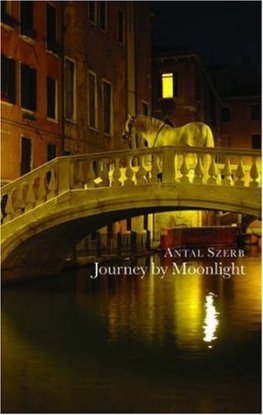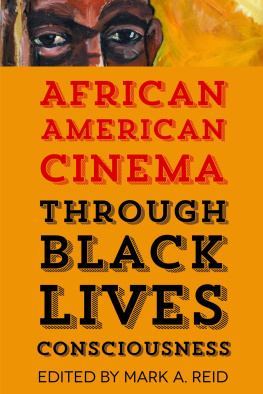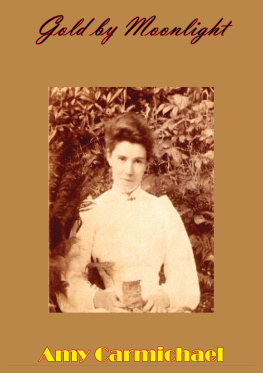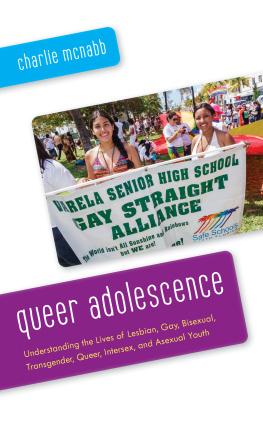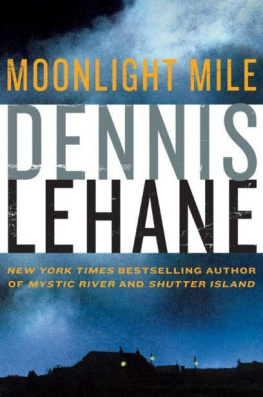Moonlight
This book helps readers understand Moonlights profound political and social importance, the innovative technical choices adopted by director Barry Jenkins and the films adoption and disruption of traditional coming-of-age themes through the specific prism of Chirons childhood and youth.
Moonlight (2016) is an intensely moving and poetically rendered coming-of-age story about a young gay Black boy, Chiron. Highly praised by both critics and audiences internationally, it garnered a surprise Best Picture win at the 2017 Academy Awards, enshrining its significance within a global cinematic canon. This book provides an account of how Moonlight can be situated in relation to African American youth films, contemporary queer cinema and its appeal to the youth market and representations of non-normative childhood and adolescence. It analyses the reception of Moonlight in terms of its form and profound emotional impact on spectators offering new visions of African American boyhoods while also contributing an extended exploration of the social and political context of the film in relation to Obama, Trump and diversity in filmmaking.
Highlighting to students and scholars the powerful emotional pull of Moonlight and why it is a highly significant film, this book is ideal for those interested in critical race studies, queer theory, youth cinema, African American cinema and LGBTQ cinema.
Maria Flood is Lecturer in World Cinema at Liverpool University. She is the author of France, Algeria and the Moving Image (2017) and has published on Francophone cinemas of the Maghreb, world cinema and political violence and terrorism and ethics in documentary film.
Cinema and Youth Cultures
Cinema and Youth Cultures engages with well-known youth films from American cinema as well the cinemas of other countries. Using a variety of methodological and critical approaches, the series volumes provide informed accounts of how young people have been represented in film while also exploring the ways in which young people engage with films made for and about them. In doing this, the Cinema and Youth Cultures series contributes to important and long-standing debates about youth cultures, how these are mobilized and articulated in influential film texts and the impact that these texts have had on popular culture at large.
Series Editors: Sin Lincoln and Yannis Tzioumakis
Gidget
Origins of a Teen Girl Transmedia Franchise
Pamela Robertson Wojcik
The Beatles and Film
From Youth Culture to Counterculture
Stephen Glynn
Clerks
Over the Counter Culture and Youth Cinema
Peter Templeton
Moonlight
Screening Black Queer Youth
Maria Flood
For more information about this series, please visit: https://www.routledge.com/Cinema-and-Youth-Cultures/book-series/CYC
Moonlight
Screening Black Queer Youth
Maria Flood
First published 2022
by Routledge
2 Park Square, Milton Park, Abingdon, Oxon OX14 4RN
and by Routledge
605 Third Avenue, New York, NY 10158
Routledge is an imprint of the Taylor & Francis Group, an informa business
2022 Maria Flood
The right of Maria Flood to be identified as author of this work has been asserted in accordance with sections 77 and 78 of the Copyright, Designs and Patents Act 1988.
All rights reserved. No part of this book may be reprinted or reproduced or utilised in any form or by any electronic, mechanical, or other means, now known or hereafter invented, including photocopying and recording, or in any information storage or retrieval system, without permission in writing from the publishers.
Trademark notice: Product or corporate names may be trademarks or registered trademarks, and are used only for identification and explanation without intent to infringe.
British Library Cataloguing-in-Publication Data
A catalogue record for this book is available from the British Library
Library of Congress Cataloging-in-Publication Data
Names: Flood, Maria, author.
Title: Moonlight : screening black queer youth / Maria Flood.
Description: Abingdon, Oxon ; New York : Routledge, 2022. | Series: Cinema youth cultures | Includes bibliographical references and index.
Identifiers: LCCN 2021029543 (print) | LCCN 2021029544 (ebook) | ISBN 9780367151393 (hardback) | ISBN 9781032152066 (paperback) | ISBN 9780429055294 (ebook)
Subjects: LCSH: Moonlight (Motion picture : 2016) | African Americans in motion pictures. | Homosexuality in motion pictures. | Sexual minorities in motion pictures.
Classification: LCC PN1997.2.M6456 F56 2022 (print) | LCC PN1997.2.M6456 (ebook) | DDC 791.43/72--dc23
LC record available at https://lccn.loc.gov/2021029543
LC ebook record available at https://lccn.loc.gov/2021029544
ISBN: 978-0-367-15139-3 (hbk)
ISBN: 978-1-032-15206-6 (pbk)
ISBN: 978-0-429-05529-4 (ebk)
DOI: 10.4324/9780429055294
Typeset in Times New Roman
by Deanta Global Publishing Services, Chennai, India
Contents
| Juans first appearance in the film |
| Chiron depicted as an awkward teenager |
| The confinement of Liberty City depicted through the image of Chiron fenced in at school |
| Kevin and Chiron kiss on the beach |
| Terrel and the other bullies force Kevin to beat Chiron |
| Chiron as Black, recalling much of Juans style |
| Paula cares for Chiron as a child, caressing his head |
| Chirons cautious and watchful gaze |
| Kevin looks directly at the camera |
| An overhead two shot of Chiron and Kevin at the beach |
| The meal that Kevin cooks for Chiron |
| Chiron rests his head on Kevins chest |
| A muscular Chiron bathes his head in water upon waking |
| The boys play football against a vast Florida sky |
| Chiron surrounded by greens and blues in Part I |
| Industrial yellow fills the sequence in which Chiron travels to the sea at night in Part II |
| Tones of red and brown fill the scene in the diner in Part III |
| A childs-eye view of the undulating waves in the swimming sequence |
| The scene in which Paula shouts at Chiron, filmed from his perspective |
| The final image of the film the child Chiron by the ocean |
Despite the high visibility of youth films in the global media marketplace, especially since the 1980s when Conglomerate Hollywood realized that such films were not only strong box office performers but also the starting point for ancillary sales in other media markets as well as for franchise building, academic studies that focused specifically on such films were slow to materialize. Arguably, the most important factor behind academias reluctance to engage with youth films was a (then) widespread perception within the film and media studies communities that such films held little cultural value and significance and, therefore, were not worthy of serious scholarly research and examination. Just like the young subjects they represented, whose interests and cultural practices have been routinely deemed transitional and transitory, so too were the films that represented them perceived as fleeting and easily digestible, destined to be forgotten quickly, as soon as the next youth film arrived in cinema screens a week later.



